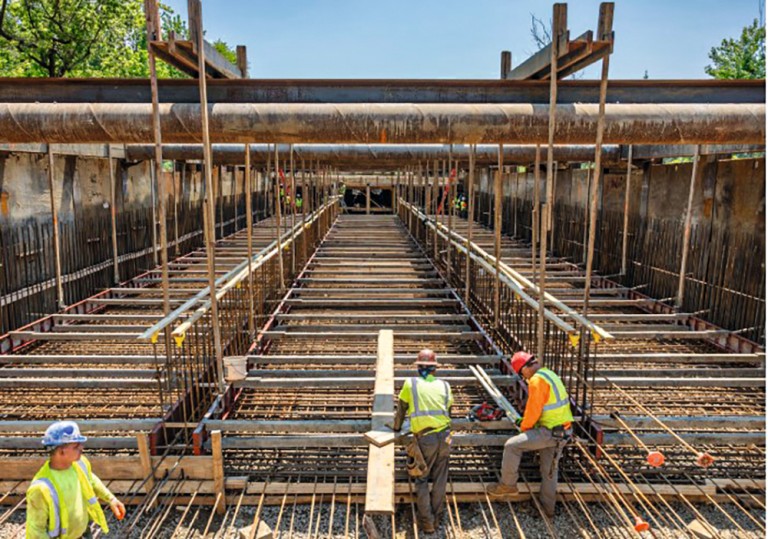By Michael V. Cusenza
City Department of Design and Construction Commissioner Tom Foley on Wednesday announced that the Expanded Work Allowance will now be made permanent.
Based on its success at DDC, EWA will also be expanded to additional capital agencies, one of the most significant broad-stroke efforts to improve project delivery in many years.
Since the pilot program was first launched in 2019, EWA has led to a 50-percent reduction in the time it takes to pay contractors for unexpected change orders on capital projects. EWA will now be rolled out to other agencies with large capital budgets, including the NYC Department of Environmental Protection, the NYC Department of Transportation and the NYC Department of Parks & Recreation.
According to DDC, Expanded Work Allowance functions as a registered contingency fund built into capital project contracts, and the contracting agency can draw on this fund immediately without any additional authorizations from oversight agencies. With EWA, once the extra work is identified and determined to be eligible, the work is estimated and can proceed immediately, with 85 percent of the estimated cost eligible for immediate payment while negotiations are still underway. In 32 pilot projects and 130 individual uses of EWA since the pilot began at DDC, the agency saved an average of 124 days from the traditional change order process – a savings of 36 percent. This effort not only keeps projects moving, but it benefits smaller vendors who may not be able to front payments to their subcontractors.
Among the EWA projects is a $78.5 million venture aimed at upgrading infrastructure, improving street conditions and alleviating flooding in Queens. More than two miles (12,400 feet) of water mains, some dating to before World War II, are being replaced with new pipes ranging from 8 to 20 inches in diameter. Twenty-five fire hydrants are being replaced and fire protection will be enhanced with 11 additional fire hydrants installed at new locations.
There will be 8,200 feet of new storm sewers and 3,700 feet of new combined sewers added to the neighborhood, ranging in size from 15 inches diameter all the way up to rectangular sewers that are 16.5-feet wide by 8-feet high. A total of 96 new catch basins will also be installed to capture stormwater and direct it to the new storm sewers. During the job existing sanitary sewers will also be replaced, with 7,600 feet installed ranging in size from 10 to 24 inches in diameter. The project will create a double-barrel storm sewer system that outlets to Idlewild Park, and which will serve as an outlet for additional projects yet to be built as part of the southeast Queens program.
As part of the final street restoration, 5,900 feet of curbs will be replaced, 65,000 square feet of sidewalks will be reconstructed and 21,000 square yards of new asphalt will be laid down over a concrete base. The new curbs and sidewalks will be graded to help guide stormwater to the area’s new catch basins to ensure adequate street drainage during storms.

